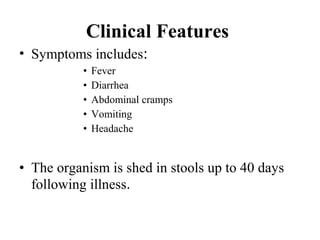


This action is the body’s way of ridding itself of poisoning organisms that are considered harmful to normal, healthy function. Vomiting: When the diaphragm (a dome-shaped muscle which forms a critical role in the breathing / respiratory process, separating the chest / thorax from the abdomen) and abdominal muscles contract, the action forces the involuntary bringing up of the stomach contents (expelling them out through the mouth).A slowing down of bowel movement in the body often accompanies nausea as the body’s way of restricting the toxic organism to the stomach only, and so that it may be expelled through vomiting. For many it is one of the first indicators that “something you’ve eaten doesn’t agree with you”. Queasiness generally occurs within 1 and up to 8 hours following ingestion of a contaminated foodstuff. Nausea: An unpleasant sensation that may or may not lead to vomiting is a common symptom associated with food poisoning.Dark yellow normally indicates dehydration (light yellow or clear is normal). One indication of dehydration may be in the colour of urine. continuously sipping water or broths can help to prevent dehydration). It is thus important to hydrate with fluids when experiencing diarrhoea (i.e. Dehydration is one of the complications a person can experience when diarrhoea occurs, as the body is losing more fluid than usual. A sense of urgency to use a toilet, abdominal cramping and bloating normally accompany diarrhoea as well. Inflammation in the gastrointestinal tract causes the bowel to become less effective in reabsorbing the fluids (water) it would normally secrete during digestion. Diarrhoea: Loose and watery stools which occur 3 or more times within a 24-hour period characterise a case of diarrhoea.This causes cramping (abdominal muscles contract as a means of speeding up natural bowel movements in an effort to rid the body of the unwanted organism) and pain in the trunk of the body, between the ribs and the just above the pelvic area. Abdominal cramps / pain: Harmful organisms in the system produce toxins that aggravate the lining of the stomach and intestines, causing inflammation.Increased blood flow means that histamine can reach various portions of the body and thus trigger pain receptors, resulting in dull aches. Histamine, a chemical that aids in widening the body’s blood vessels, allowing for more white blood cells to travel through in order to fight off signs of infection, is released once the immune system activates as a result of inflammation. An active immune system may also result in muscle aches. General malaise is sometimes known as ‘sickness behaviour’ – it is, in a sense, the body’s way of encouraging rest and diverting attention away from certain functions in order to prioritise fighting off an unwelcome organism. Cytokines also send signals to the brain, which triggers symptoms like fatigue and loss of appetite. Cytokines effectively ‘communicate’ where immune cells ‘need to go’ and tell them ‘how to tackle’ harmful organisms. One of the main functions of these proteins is to help regulate the body’s immune response when signs of infection are present. Once the immune system detects a foreign entity or organism, chemical messengers known as cytokines are released. General malaise (illness, uneasiness, discomfort): Initial signs and symptoms that the body’s immune system is reacting to a foreign organism may be fatigue, body weakness and loss of appetite, as well as aches and pains.The most common signs and symptoms of food poisoning include:

Severity of symptoms ranges according to the level of contamination and the type of harmful organism ingested. Pesticides or botulinum toxins can alter the neurological (nervous) system, for instance. Some food poisoning symptoms depend on which organ system in the body a contaminant affects. At least 3 of the below signs and symptoms may occur, depending on the type of infectious organism causing contamination. Different toxic organisms interact with foodstuffs and the body differently, presenting an array of possible symptoms that can occur. The signs and symptoms associated with food poisoning may last for a handful of minutes, to a few hours or several days after a contaminated substance has been ingested. What is the outlook for food poisoning?.

Who is most at risk for food poisoning?.


 0 kommentar(er)
0 kommentar(er)
